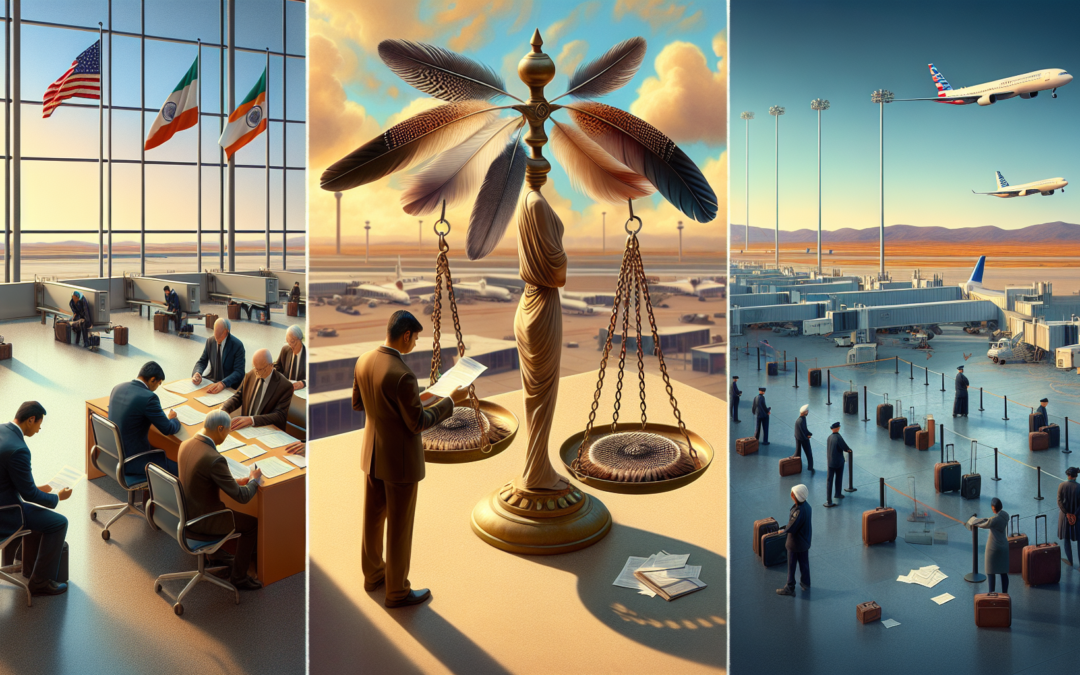Guarding the Gateway: A Law Enforcement Perspective on Filming in Airports
The Thin Blue Line at the Terminal
Airports—the modern-day gateways to the world—are spaces humming with diversity, innovation, and sheer human emotion. Every departure hall tells a different story, from joyful reunions to heartbreaking farewells. As aviation technology propels us ever higher into a connected future, the soul of the airport remains deeply rooted in tradition: connectivity with care.
For the law enforcement officers charged with maintaining order amidst this tapestry, airports present a paradox. On one hand, they symbolize progress and accessibility; on the other, they harbor potential threats as loci of vulnerability. It is here, in this delicate balance, that the battle for safety and liberty vies for superiority.
In recent years, the act of filming in airports has emerged as an arena scratching at the nerves of law enforcement personnel. Frequent audits conducted by citizens claiming an allegiance to transparency have blurred the lines between accountability and intrusion. Officers find themselves at a crossroads, holding fast to the belief that their vigilance protects a multitude, while facing the challenge of evolving societal norms.
Filming Auditors and the “Grey Zone”
The rise of these self-appointed auditors—individuals with the intent or claim to observe and record public proceedings—poses a profound challenge. Gone are the days when a uniformed presence brought unquestioned reassurance. Today, officers must weave their duties into an increasingly intricate legal and ethical framework.
To the vigilant officer, an auditor may appear to manifest out of nowhere—a camera held high, questions poised, agenda unknown. Is this merely transparency at play, or an adversary seeking to exploit their presence? Here, judgment calls must be made quickly, and consequences accepted boldly. For any decision rendered in the crowded arena of an airport terminal resonates far beyond what is expressed in real-time.
Under such high-stakes conditions, the unsettling undercurrent that ripples through these encounters is heightened by a shared duty with the public to uphold justice, rendered opaque by differing motivations. Those called to protect and to serve stand within a society tugged in opposite directions: expanded rights, constrained enforcement.
Law Enforcement Dilemmas
At the forefront of this discussion are the painfully unquantifiable consequences that a simple recording device can invoke. Though equipped with the responsibility and the power of legal enforcement, officers are flesh and blood, not omniscient forces. And the motivations underpinning the ubiquitous smartphone lens can be as varied as snowflakes.
Consider, for example, the challenge of distinguishing harmless documentation from reconnaissance aimed at disrupting public processes. To stand idly by without asserting authority carries risk; to overreach similarly holds peril. And so, the dedication poison of doubt enters the landscape for both sides.
Officers are constantly re-evaluating their protocols, trained as finely as an orchestra to perform under unpredictable duress. Even simple moments—tasked with absorbing changes, subtexts, expressions—become battlegrounds often dissected later with soundless scrutiny. Encounters reduced to hashtags trivialize engagement, erasing sincerity and intent.
Training for a New Era
This evolving battlefield requires information like never before—a clearer psychological blueprint aggregated from myriad experiences. Officers retune strategies, cultivating resilience amid heightened scrutiny and bolstered security demands. Keeping pace with technology—not just to prevent issues but to ingratiate officers with the resources capable of delivering informed decisions rapidly—is crucial.
Utilizing new training simulations and turn-key standard operating procedures, law enforcement aims to elevate public education programs that encode not sympathy, but a poignantly mutual respect for law and order’s intricate dance. Many existing officers may fondly recall the first day their feet touched terminal tarmac, beyond rolling luggage, weary travelers, background noise. They arrived with intensity in their hearts reflective of service, viewing their badge as an unyielding oath.
Bridging Narratives
Meanwhile, initiatives to engage openly-discussed parameters seek not to silence citizen-recorders but to invite meaningful collaboration, informing ecosystems based on healthy learning.
In this mosaic—amidst urban exchanges careering both orderly and chaotic—a point of convergence emerges when evaluating the shared interest officers invoke to guard not against innocent records but perfidious incidences.
It lies before us to see the story inside the lens—from patrons meandering about holding wish lists and flight itineraries sweetly nested inside coat pockets, embracing ideas extended beyond linear timeframes—equally belonging to co-diversity and deliberate growth.
Ultimately, partnerships growing from understanding allow a bridge resonant by choice. That is, between individual rights in filming opportunities duly appointed for the transparency of open recording, and tighter policies chicory opinions dismantle inefficiencies found flourishing regretful crime scenes unformed by powers invested amid cyclists, outbound staff—sacrifice inevitable resist force friends sparking ignited humanity sharing charge interchange as dream remembered. Join the discussion via YouTube, follow updates on Facebook, or check out this eye-opening episode.
For within stories narration thrives peace: transit conquer resolve—simplifying relations among everlasting machine-connected generations barking rebuffs hope secure laughter alongside judiciously pose hear held watched nuance protecting heartland innovation aboard airplanes hailing each harmonic deceleration.

Recent Comments